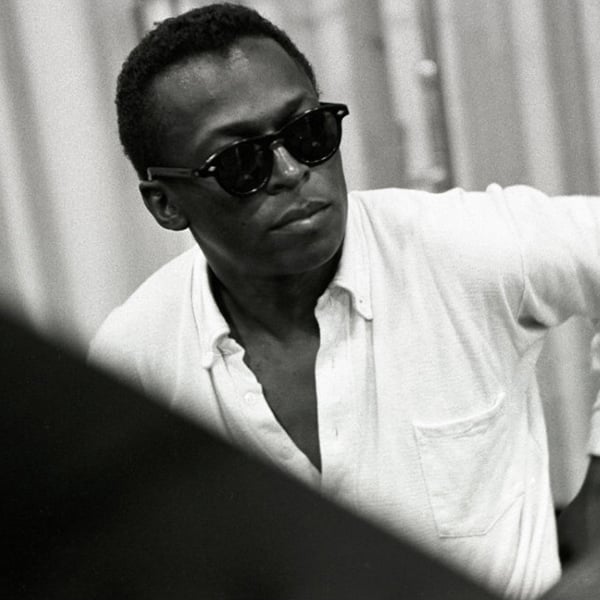
Little at that time suggested the impact Miles’ first consistent group would ultimately have, but his 1955-’57 quintet has since become renowned as one of the groups that not only defined Hard Bop, but remains a model of collective improvisation for jazz students to this day. The lineup: Sonny Rollins on tenor at first, but soon replaced by the then unknown John Coltrane, Red Garland on piano, Paul Chambers on bass and Philly Joe Jones on drums.
Jones was especially critical to this lineup, having partnered with Davis off and on since 1953, Philly Joe provided the initial spark for the band. Jones’ and Davis’ shared road experience had honed a musical telepathy between the two; Miles did not hesitate crediting his input: “Philly Joe was the fire that was making a lot of shit happen. See he knew everything I was going to do, everything I was going to play; he anticipated me, felt what I was thinking. Sometimes I used to tell him not to do that lick of his with me, but after me. And so that lick he used to do after I played something – that rim shot – became known as the “Philly lick,” and it made him famous, took him right to the top.”
Coltrane was the other sparkplug in the band, but it took time. He had been playing in organist Jimmy Smith’s group at the end of summer 1955 when a call came to audition for trumpeter Miles Davis’ band. Both Red Garland (who played with Coltrane in Eddie Cleanhead” Vinson’s band in the late 1940s,) and drummer Philly Joe Jones (who knew him from the Philadelphia scene,) had recommended him Rollins left New York City.
Coltrane arrived ready to play whatever charts and learn the parts given to him, as he had experienced with other bands. To his surprise, Miles offered little direction and their meeting did not go smoothly. “I think the reason we didn’t get along at first was because Trane liked to ask all these motherfucking questions back then about what he should or shouldn’t play,” Miles wrote. “Man, fuck that shit; to me he was a professional musician and I have always wanted whoever played with me to find their own place in the music. So my silence and evil looks probably turned him off.”
Still, Miles detected promise and decided to hire the musician with the questions. Despite Coltrane’s initial uncertainty—“I am quite ashamed of those early records I made with Miles. Why he picked me, I don’t know”, he later said—he persevered. Miles was impressed. “After we started playing together for a while, I knew that this guy was a bad motherfucker,” Miles wrote in his autobiography, “…just the voice I needed on tenor to set off my voice.”
The band worked on and off into the fall of 1955, solidifying a strong, collective sound and an impressive stage show that contrasted with Davis’ inconsistent live performances of the past. Miles was their debut, a collection of standards—pop and bebop—that corralled the energy, moods and tempos of the tracks suggest the forethought that went into Miles’ nightly gigs, like “The Theme,” which served for years as the group’s set-closer. The album was a scene-changer, placing the jazz world on alert that a new group, not just a collection of soloists, was demanding attention.




